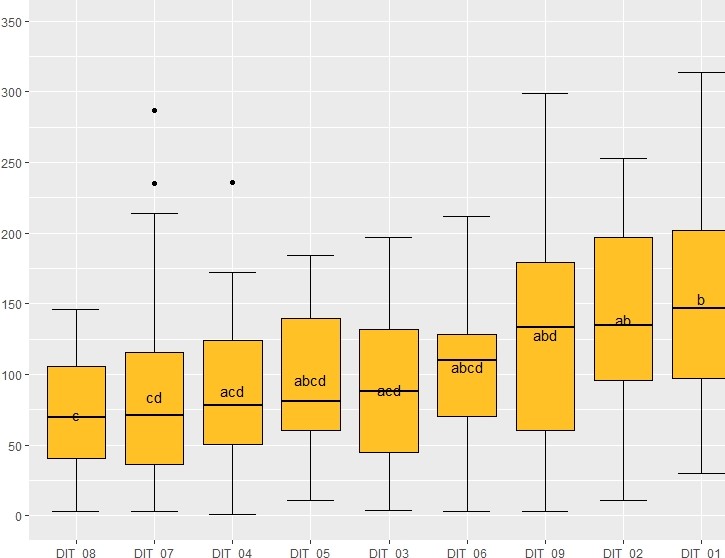

So if the variable you want to plot is named my_categorical_var, you might set x = my_categorical_var. When we create a barplot, we always need to map a categorical variable to the x or y axis. The aes() function enables you to map variables in your dataframe to the aesthetic attributes of your plot. So for example, if your dataframe is named mydata, you’ll set data = mydata. The ggplot function is designed to work with dataframes, so you’ll specify a dataframe as an argument to this parameter. The data = parameter indicates the data that we’re going to visualize. Essentially, it tells R that we’re going to draw a visualization with ggplot. The ggplot() function initializes the ggplot2 data visualization system. To create a barplot with ggplot2, you need to call the ggplot() function along with geom_bar(). With that in mind, if you need a quick review of ggplot2, you can read our ggplot2 tutorial for beginners. I’m going to try to explain everything piece-by-piece, but it will require some knowledge of the ggplot2 visualization system.
#R studio ggplot filter how to#
Here, I’ll walk you through the syntax for how to create a bar char with geom_bar. Therefore, let’s look at the syntax for geom_bar, and how we use it in conjunction with ggplot to create our bar charts. Having said that, to create a bar charts with ggplot2, you need to understand the syntax. They’re also relatively easy to create and modify.
#R studio ggplot filter professional#
One of the biggest reasons is that by default (or with a few simple modifications), ggplot2 barplots look professional and well designed. I prefer ggplot barplots for a few reasons. Instead of using base R, I strongly recommend using ggplot2 to create your bar charts. I avoid base R visualizations as much as possible. Having said that, the barcharts from base R are ugly and hard to modify. Using traditional base R, you can create fairly simple bar charts.

If you’re doing data science in R, then there will be several different ways to create bar charts. Ultimately, a bar chart enables us to make comparisons between categorical values on the basis of a numeric value. In other cases, the value encoded by the length will be a specific value. Sometimes this value will be a statistical computation, like the mean value for each category or the count of the number of records. The length of the bar represents a value. So typically, when we create a barplot, we have a categorical variable on one axis and a numeric variable on the other axis. In particular, barplots (AKA, bar charts) are very useful for plotting the relationship between a categorical variable and a numeric variable. The barplot (AKA, the bar chart) is a simple but extremely useful data visualization tool. Let’s quickly do a review of barplots and barplots in R.

I’ll explain the syntax, and also show you several step-by-step examples. This tutorial will show you how to create a barplot in R with geom_bar (i.e., a ggplot barplot).


 0 kommentar(er)
0 kommentar(er)
